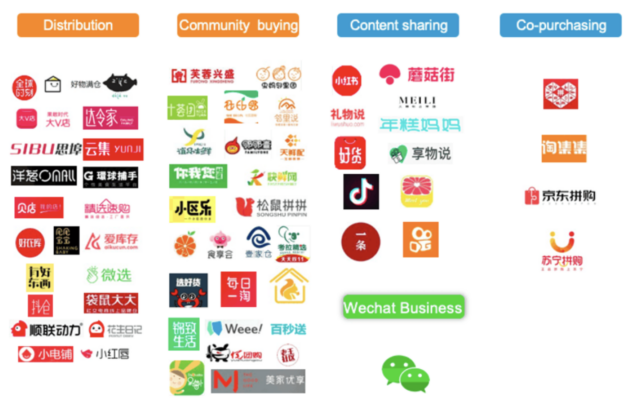China has been at the forefront of social commerce, with companies like Alibaba, WeChat and Taobao paving the way for a new era of online shopping. In contrast, brands in the U.S. are lagging behind in realizing the opportunities social commerce presents, but are also keenly aware of the transformations necessary to appreciate this growth.
While social behaviors are shifting in the U.S.—leading to a clear indication of social commerce growth—it’s the decision-making process and relationship between tech, commerce, creative, consumer insights and data that need to grow to realize the capacity for U.S. shoppers to be influenced by social engagements on any number of platforms.
“In the last 12 months, social commerce-based apps have taken a 10 percent market share away from traditional e-commerce platforms like Tmall in China,” says Qunin founder Thomas Nixon, who led Monday’s SXSW panel, Prepare for the Social Commerce Era and Look East!
“Expanding at a 26 percent CAGR, China is on track to reach $1 trillion by 2025, representing 30 percent of China’s e-commerce market,” Nixon added. In contrast, social commerce is projected to be “just 6 percent of e-commerce in the U.S. and 5 percent in the U.K. by 2025.”
In order to pick up the pace, Nixon says brands need to overhaul how they think about consumers, products, sites—and their own organizations—outlining how they can take a page from China’s social commerce playbook and shift the already-evolving key differentiators in shopping and social behaviors leading to the divide.
This includes acknowledging the difference in how we define social commerce, even as that definition is changing—to move beyond a conflation of all e-commerce 1.0 with the peculiarities of social commerce.
Social Commerce Is More Than Never Leaving Social To Make A Purchase
According to Nixon, there’s a misconception among some marketers that the minimum qualification for social commerce is an ad that links through to a website. He says it’s also a misconception to think of it as necessarily taking place within one social ecosystem.
“For me,” Nixon says, “there is a very, very different view on what social commerce is when working in the Chinese market versus working in other international overseas markets. … When you’re operating in a dynamic social-first market like China, you very, very quickly begin to understand, learn from and observe certain behaviors that tend to lead to a different way of thinking.”
Remaining within a connected social ecosystem when making a purchase is part of this, Nixon notes, but it’s not social commerce, in totality, since it’s not really “social.“
“True” social commerce relies on a number of touchpoints across apps, motivated by a growing trust in and democratization of Key Opinion Consumers, or KOCs, the rise of group shopping, an increasingly always-online population, the DTC model, cross-generational mobile tech adoption and gamified experiences.
This marks a shift from social commerce as a purchase made on social media, to purchases motivated by online social behaviors that just happen to take place in or across those ecosystems. In actuality, the “ecosystems” in question span a range of apps that all act as different constellations connecting the social shopping experience. And they’re heavily franchised.
“Forty-two percent of all unicorns in Asia are invested in by Tencent or Alibaba,” Nixon notes.

With this in mind, it’s better to understand approaches to social commerce as requiring a shift from traffic, product and site-based ends, to a more customer-centric focus. It also means an approach to social commerce that anticipates future shopping behaviors rather than recapitulating those of the recent past.
A Different Approach To Social Commerce
To prepare for the social commerce era, Nixon suggests companies adopt a customer-centric online presence, differentiated consumer operations and cross-functional collaborations, as well as omnichannel synergy and CRM across the journey.
Nixon outlines a three-point overhaul based on current limitations in approaches to social commerce outside of China. These include:
- Overhauling consumers: A major problem for marketers is the limited profiling and lack of clear segmentation to adequately understand social commerce opportunities.
- Overhauling products/sites: These currently lack the insights that social commerce apps provide and have outdated commerce and marketing operations, and products are not developed nor priced with social commerce in mind.
- Overhauling organizations/teams: Organizations are working in silos or along a linear decision-making path. Instead of a linear model of workflow, consider positioning a digital specialist at the center of a process wherein consumer insights, commerce, tech, data and creative work collaboratively rather than in discrete, progressive steps.
Part of initiating these changes involves a revamped design thinking process, which Nixon notes has been the blueprint for successful social commerce engagements in China.
In brief, design thinking begins with a period of inspiration. During this phase, marketers should first understand the market through research, observe the market themselves and then define a POV. Following that, a process of ideation, in which ideas are developed, prototyped and tested, leads to the final phase: implementation. In the implementation phase, storytelling, pilots and business models are put into action. (Read more about design thinking here.)
Brands that have seen success with this approach include Pizza Hut, Lancôme and Philips. For Philips, the secret to the six-fold growth of its Home Appliances GMV (Gross Merchandise Value) was the following:
“Build incremental value through livestreams and content, connect with users within the WeChat ecosystem, facilitate the linkage between public and private traffic and establish differentiated content to achieve long-term relationships with users and promote the conversion of potential customers,” Nixon says.
Breaking it down further into a three-step management strategy for WeChat livestreaming accounts, Philips Home Appliances achieved 6x GMV with the following steps:
- “Cold Start Period” – Divert private traffic to livestreaming by integrating with other WeChat features such as mini-programs to pre-heat consumer engagement.
- “Livestreaming Strategy” – Adjust live content and pricing strategy based on consumer preferences.
- “Stable Traffic” – Increase public traffic and accelerate private domain Click Throughs via personalized WeChat service and livestreaming to improve backend conversion rate.
The Transformation Is Already Happening
Senior U.S. marketing leaders are already invested in these overhauls to capitalize on a shift toward social commerce, bridging otherwise disconnected sales, product and marketing processes.
At the Tuesday morning featured session, A New School of Leaders Transforming the Marketing Experience, Unilever’s Conny Braams discussed why she ditched the “marketing” in her previous title in exchange for the title of Chief Digital and Commercial Officer as the company undergoes digital transformation.
“I think the most important challenge and opportunity for fast-moving consumer goods … is probably the creative commerce revolution,” Braams said.
She went on to explain how the company is approaching social commerce and the necessity for similar overhauls.
“You’ve announced me as the Chief Digital and Commercial Officer, and often, people are mistaken [about] why Unilever, as a big marketing company, would drop marketing from the title of one of the execs, and basically, that isn’t the case. … We’ve added sales to it,” Braams said. “That’s how it became ‘Commercial Officer.’ And the reason for this [is because of the external] convergence of entertainment, media, commerce [and] content. We basically said, ‘You know, if I sell something via Facebook or Instagram, later on probably via Netflix, is that marketing, or is it sales?’”
Braams noted that previous organizational structures and approaches to e-commerce were not adequate for social commerce and creative commerce—and shared why she has positioned herself as a digital specialist at the very center.
“You can’t really distinguish [sales vs. marketing] anymore,” she continued. “So we’re blurring [the] lines between marketing and sales internally to respond to what is happening externally. … We’ve taken marketing and sales together to really make sure that we build brands and convert to sales at the same time with all the new channels that are developing.”
In October of 2021, Unilever launched its Positive Beauty Growth Platform, an initiative to help the CPG giant partner with scale-ups and start-ups linked to social commerce in the beauty space.

